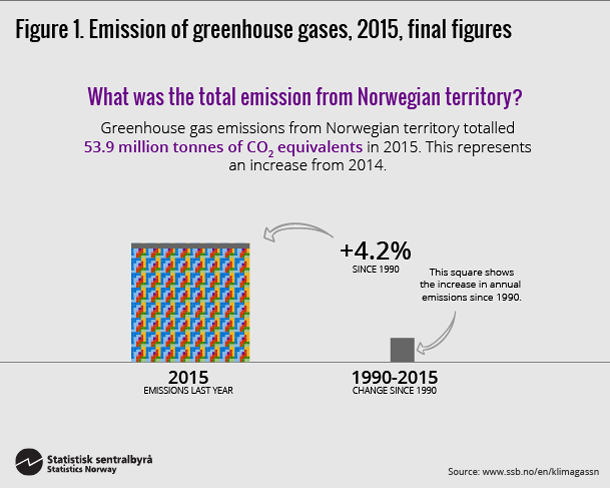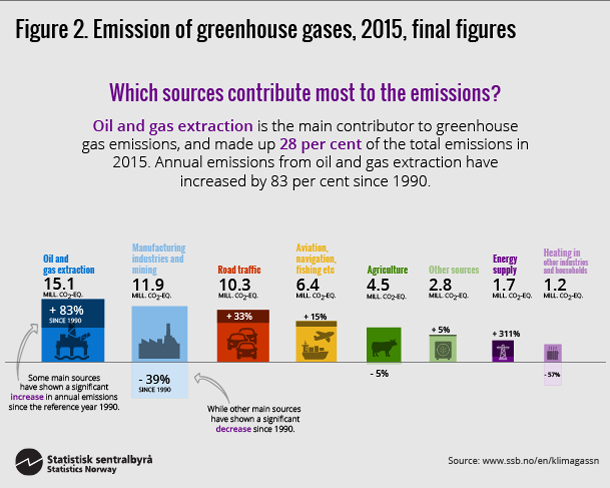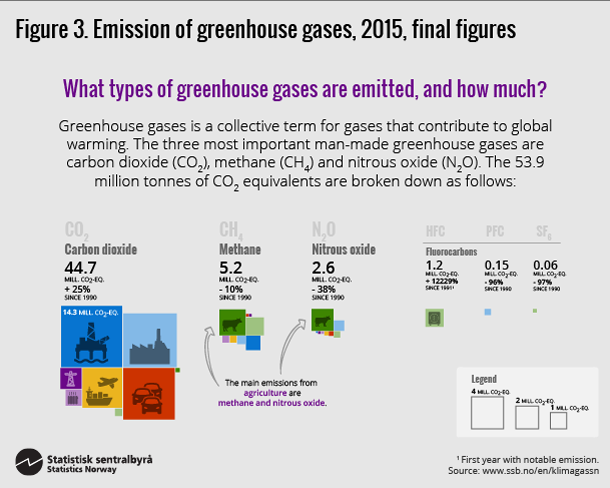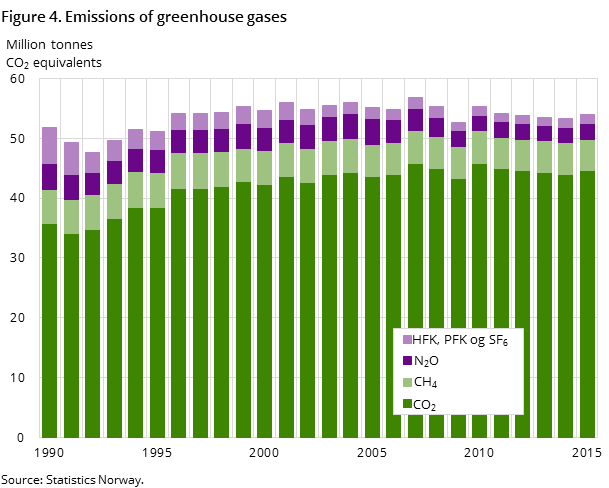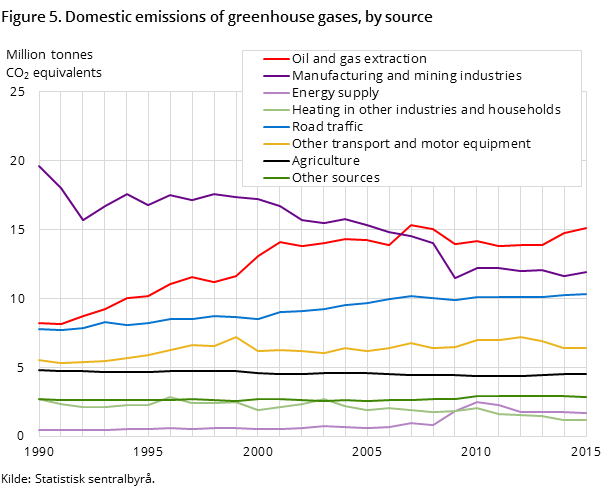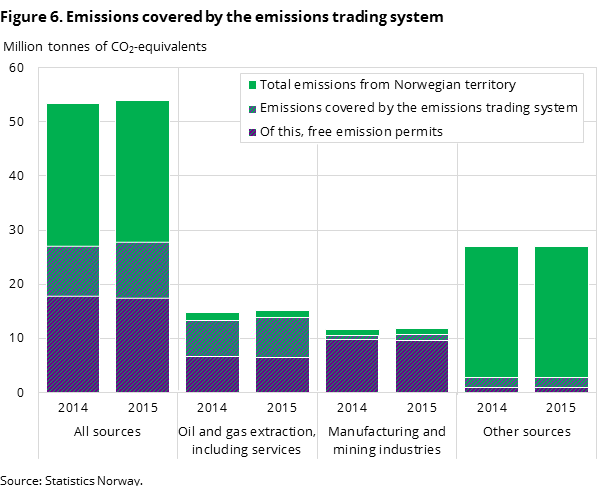Greenhouse gas emissions up 1 per cent in 2015
Published:
Emissions of greenhouse gases from Norwegian territory amounted to 53.9 million tonnes in 2015. This is 0.6 million tonnes, or about 1 per cent, more than the preceding year. The increase is mainly due to higher emissions from oil and gas extraction and manufacturing industries.
- Full set of figures
- Emissions to air
- Series archive
- Emissions to air (archive)
These are the most recent figures on Norwegian greenhouse gas emissions for 1990-2015. All figures are given in C02 equivalents. The total emissions for 2014 have been adjusted upwards by 0.1 million tonnes compared with the figures published in May 2016. This means that the emission increase from 2014 to 2015 was somewhat lower than previously assumed.
Higher emissions from manufacturing industries and offshore activities
From 2014 to 2015, the greenhouse gas emissions rose by almost 600 000 tonnes. With that, the greenhouse gas emissions in 2015 were 4.2 per cent higher than in 1990. The major part of the emission increase last year was due to CO2 emissions from oil and gas extraction, where increased production caused more use of natural gas. In manufacturing industry, oil refining and production of fertiliser in particular contributed to higher CO2 emissions. In addition, more sheep and higher use of fertiliser have caused higher emissions of methane and nitrous oxide from agriculture.
For offshore activities, the emissions have more or less grown proportionally with the production during the whole period from 1990. In manufacturing industries, new technology and improved process regulation have given significantly lower emissions during the same period. Significant emission reductions due to environmental technology have, however, not taken place since 2008.
Small changes in emissions from road traffic
The greenhouse gas emissions from road traffic increased only slightly in 2015 compared with 2014. For the last few years, the annual emissions from this source have been about 10 million tonnes – approximately 30 per cent higher than in 1990.
While road traffic measured in mileage has risen by approximately 17 per cent since 2005, the greenhouse gas emissions grew by only 7 per cent in the same period. This is mainly due to new cars being more fuel efficient and the growth in use of diesel engines over petrol.
Use of electricity and bio fuels will not lead to greenhouse gas emissions from road traffic in these statistics. Electric cars constituted 2.6 per cent of registered private cars at the end of 2015. The share of renewable energy used for transport has been just below 5 per cent during the last years.
Lower emissions of the strongest greenhouse gases
For the first time since use of the strong greenhouse gases called HFCs began in the 1990s, emissions of these were reduced in 2015. These gases are used in a variety of products, such as air conditioners in cars and buildings, heat pumps, and for refrigeration. The emissions are small in comparison with the other greenhouse gases in these statistics, but the potential for growth is vast, since use of the aforementioned products is growing. The introduction of an import tax on this kind of gas in 2003 is assumed to be responsible for the slowing down in the growth and eventually the weak reduction in 2015.
Emissions covered by the emission trading scheme
Emissions of greenhouse gases from companies liable under the emission trading scheme totalled 27.9 million tonnes of CO2 equivalents in 2015. Emissions covered by quotas made up 51.8 per cent of the total emissions of greenhouse gases from Norwegian territory. Emission quotas for 17.6 million tonnes were allocated for free in 2015, corresponding to 63 per cent of the total quota emissions.
Contact
-
Kathrine Loe Bjønness
-
Henning Høie
-
Statistics Norway's Information Centre

